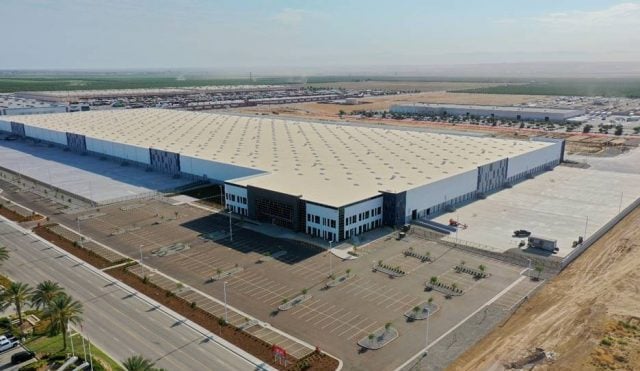SAN DIEGO—Digital-marketing and video-gaming companies make up the bulk of the media sector in San Diego's tech market, Andrew Ewald, CBRE's VP and head of its tech and media practice in San Diego, explains to GlobeSt.com. After a recent report from the firm showed tremendous growth in the sector locally, we spoke exclusively with Ewald about the latest findings and how San Diego's media sector compares to that of other markets in California.
GlobeSt.com: What is your take on your firm's findings about the local tech sector?
Ewald: It is great to see the velocity of growth in the local tech-sector companies. Typically, our growth is from local companies that are expanding organically in San Diego, but recently we have also seen a tremendous amount of new companies that have relocated or expanded their business operations to the Sorrento Mesa area. The epicenter of the tech market is receiving global recognition, which is attracting a number of new companies to this market. From a real estate perspective, this growth is driving demand for quality class-A buildings that are rich with amenities, as well as unique, older product that is being converted into more creative and collaborative workplaces. As Sorrento Mesa continues to see growth in its tech community, the war for talent will continue to drive decision makers to demand quality building opportunities to recruit and retain. I expect to see this continued growth in this tech sector over the next 24 months.
GlobeSt.com: How would you characterize the media sector's strength in San Diego?
Ewald: There's really a definition around that. Media to us is different from media in L.A. There are really two major buckets to media as we define it in San Diego: digital marketing and advertising and then companies in line with the gaming industry. Those are really the two large pillars of our particular media market, and they're expanding rapidly. They're both very different categories: digital marketing is focused on sales, marketing and creative-type individuals, while the gaming industry is more of an engineer-focused labor pool.
Digital marketing and media companies have been instrumental in helping our Downtown market recover from being an ailing market three to four years ago. Major companies like Houzz, Underground Elephant, Mirum (which just bought Digitaria) and Red Door Interactive are well-known names that are continuing to grow in our marketplace. They have selected the Downtown market to be the focus for their business. Part of that is due to the nature of the labor force Downtown, a younger, more-creative, fresh-out-of-college workforce looking for interaction, community and collaboration. These groups seek large, open floorplates and environments that support their particular labor groups. They are interested in the live/work/play buildings in our Downtown market vs. the gaming industry, which is a little more focused on the central markets—Sorrento Mesa in particular. Sony has its large PlayStation group there. If you look at our Tech 30 report, from 2009 to May 2015, the media sector throughout the country saw 14.8% job growth, which is just behind the high-tech software-services sector. We're seeing this type of growth in each of these top-30 markets.
GlobeSt.com: What else can you tell us about the type of space these firms are looking for and the submarkets they are seeking?
Ewald: There are really three areas that are attracting this sector: the Downtown market is first—the younger generation that used to go to Pacific Beach is now living Downtown, and there's a synergy of incubators, start-ups and other companies there. The Golden Triangle is next, which includes Sorrento Mesa and UTC; this spun off the engineering focus for people wanting to be in the same area where Qualcomm is recruiting (or potentially laying off). And third is Carlsbad, which has a great mix of companies like Rockstar Games—companies that are seeking a little bit of a cheaper office opportunity and a reverse commute for some people in town driving north.
GlobeSt.com: How does San Diego's media sector compare to that of other markets in California?
Ewald: The Peninsula and San Francisco Bay Area are leading the pack. They're number one. Despite the dynamic of UCSD being such a powerhouse, with 9,000 students coming out of its engineering program, a good majority of them are seeking office space in the Bay Area. There's a large convergence of tech, entertainment-media companies and funding sources like VC helping them grow up there. San Diego will always be behind the L.A. and San Francisco markets with respect to VC dollars to spend. Also, Culver City and south of Venice Beach, just south of Santa Monica, we're seeing incredible growth in the media and entertainment sector, which is spurring a resurgence of office product. It's challenging landlords, whether of new or existing product, to attract that type of labor talent by repositioning assets that might be in the more traditional office sense slightly obsolete.
GlobeSt.com: What else should our readers know about the San Diego media sector?
Ewald: The nice thing about San Diego is we really are seeing some very positive growth, and those factors are really due to the lifestyle and the community we have. Most of our growth is still organic which is an indication of the entrepreneurial spirit that is a great driver for us. We're not like L.A. or the Bay Area; our growth has typically been from within, but that's changing. Qualcomm used to be what we talked about, and now it's a much more diverse base. Companies in other markets are looking to set up new regional offices here; we're seeing a tremendous amount of new blood coming to our market, which we haven't seen in the past. This will push our growth in these particular sectors.
© Touchpoint Markets, All Rights Reserved. Request academic re-use from www.copyright.com. All other uses, submit a request to [email protected]. For more inforrmation visit Asset & Logo Licensing.






